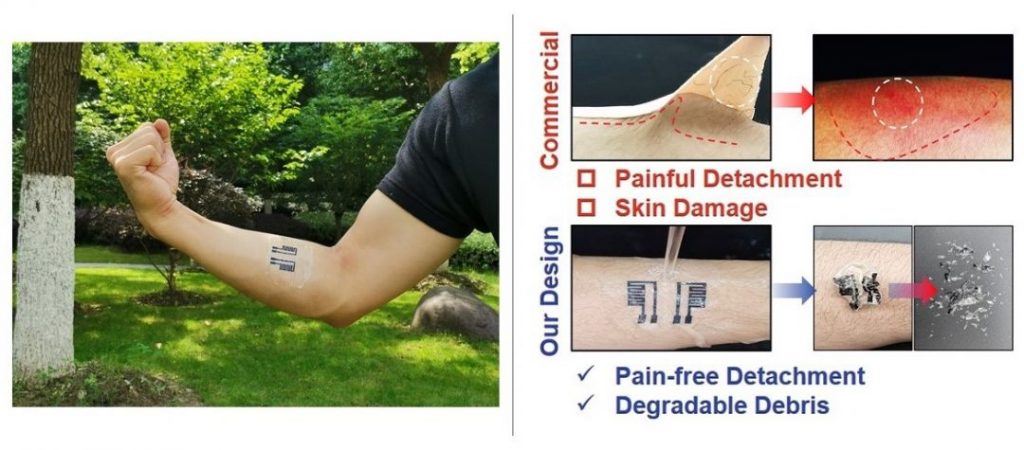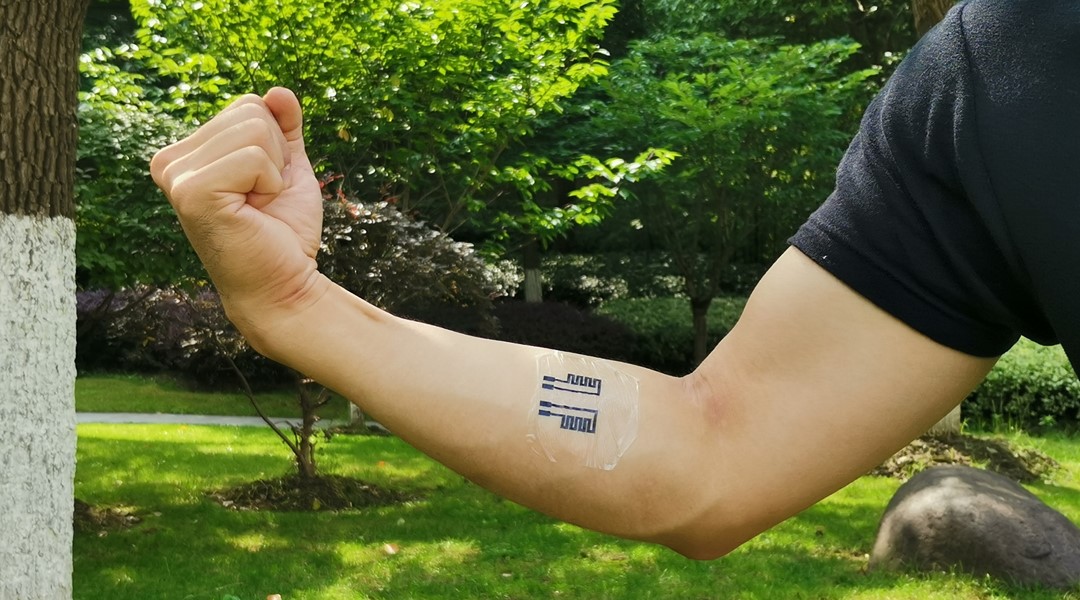Imagine you could wear a simple stick-on tattoo that would function as a wearable clinic, sensing and communicating complex physiological data and even treating certain ailments. Though it sounds like science fiction, recent developments in the emerging field of ‘epidermal electronics’ indicate we are not far from that scenario. With electronics becoming increasingly thinner, lighter, and stretchable, it has now become possible to build miniaturized sensory devices that can non-invasively monitor the vital physiological and metabolic functions of our body just by interfacing with our skin.
While an exciting possibility, there are still several challenges to this technology going mainstream—one of which is making it truly “skin-friendly”.
When it comes to interfacing a patch-like electronic device with human skin, the nature and extent of its adhesion are critical. While some advocate weak adhesion of epidermal electronic patches (e.g., via van der Waals forces) to enable easy detachment from the skin after use, such designs have undesirable effects like the patch peeling off during intense physical exercise or when the skin is moist or oily. On the other hand, though strong adhesive designs render the patches more robust and efficient, they pose risks such as irritation as well as possible skin damage and pain when the patch is detached.

Prof. Tiger Tao and his co-workers at the Shanghai Institute of Microsystem and Information Technology have developed a “skin-friendly” epidermal electronic patch that demonstrates firm adhesion to the skin, strong enough to facilitate efficient and normal functioning even when the skin is moist, oily, or hair-covered. At the same time, it allows easy and pain-free detachment of the patch from the skin.
This is achieved by an “on-demand detachment” design where the epidermal electronic device can be degraded by rinsing it under running water. Central to this design is the composition of the substrate that uses silk fibroin protein as the framework, genetically engineered resilin protein as the modifier, and glycerol as the plasticizer. This material is transparent and stretchable, and houses a number of physical and biochemical sensors.
“This study [works] across several disciplines including materials science, chemistry, physics, biological and electronic engineering, as well as machine learning,” Prof. Tao says.

The epidermal electronic patch developed by the team allows the simultaneous and selective measurement of multidimensional parameters, such as electrocardiograms (ECG), electrooculography (EOG), and electromyography (EMG), in addition to temperature, humidity, and strain sensing. Interestingly, the patch can also detect on-skin bacterial infection via an electro-bacterial-graph.
Further, as a proof-of-concept, the epidermal electronic device employs a machine learning tool to process and analyze the collected sensory data, where an artificial neural network algorithm acquires the physiological signatures and classifies them into different user-understandable categories. For example, the device can be trained to recognize how the user feels and prompt notifications like “vigorous” or “tired” when the user does intense physical work, or “stimulated” after the user drinks a caffeine-containing beverage.
Such devices combining machine learning tools with epidermal electronic sensors could pave way to future health-monitoring systems that are more personalized and intelligent.

















